


























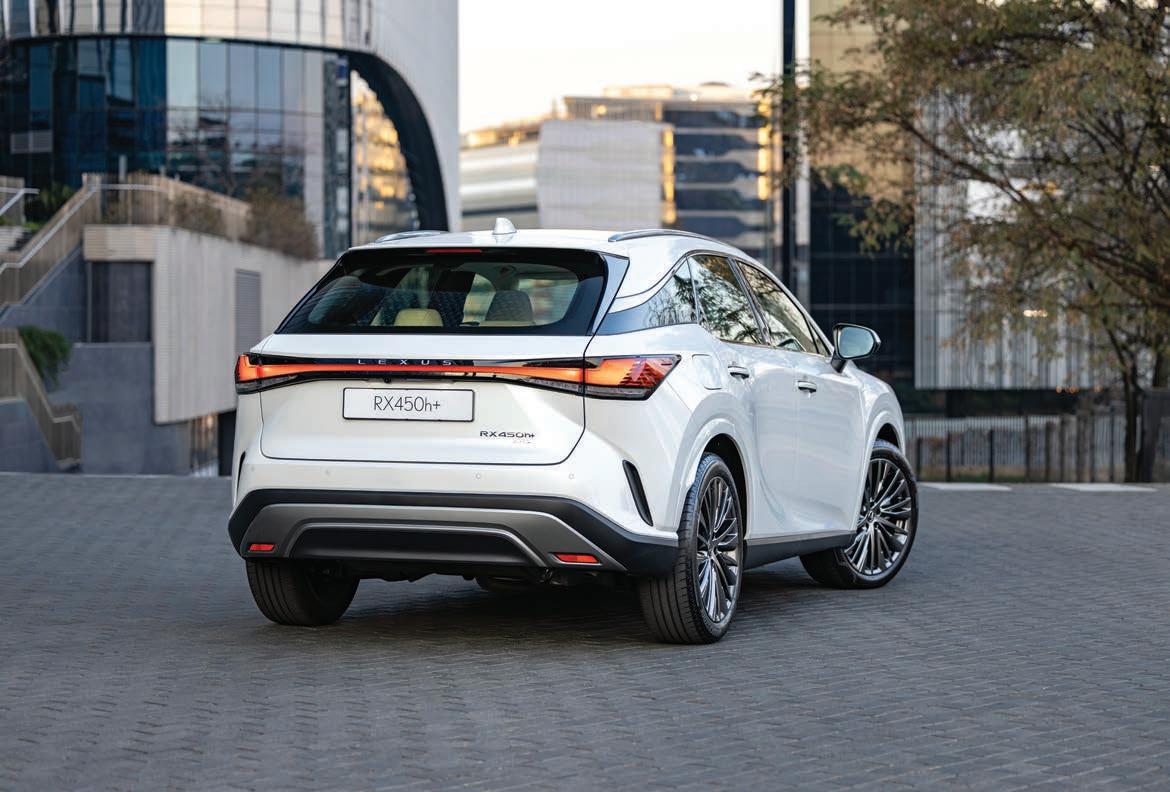



Lexus has adopted a multipathway approach to a sustainable future, writes ROGER HOUGHTON
The global warming alarms leading to a proposed switch in the nature of automotive powertrains from those using fossil fuels to electric systems have resulted in concern and uncertainty in the minds of vehicle buyers. This has been particularly rife in the luxury end of the passenger car market, where battery electric vehicles (BEVs) are being pushed as the ideal solution.
Generally, BEVs are currently more expensive to produce than cars with
internal combustion engines, so they are out of the financial reach of the bulk of consumers, hence their pre-eminence among the luxury brands.
TOYOTA AND LEXUS ARE ON A MULTIPATHWAY APPROACH THAT SEES THEM PLANNING TO RESPOND WITH DIFFERENT STRATEGIES TO SUIT CUSTOMER DEMAND AND THE TYPE OF APPLICATION.
Toyota, the parent company of Lexus, says it realised years ago there is no turning back and the world must decarbonise. However, the company has taken a different stance from many of its major competitors, most of whom have committed to the large-scale substitution of BEVs for petrol- or diesel-engine vehicles in their various ranges.
Akio Toyoda, the chairperson of Toyota Motor Corporation, has guided the company in its adoption of this more conservative approach by stating that there is no silver bullet or single technology that will provide the required outcome.
Toyoda says the answer must rely on a speci c decarbonisation technology – of which
there are many – that is best suited to a consumer’s practical requirements. Therefore, Toyota and Lexus are on a multipathway approach that sees them planning to respond with different strategies to suit customer demand and the type of application. However, before we give you details of the various paths Toyota and Lexus are taking, we need to describe the various options.
• Specially adapted internal combustion engines (ICEs). These are internal combustion engines that have been adapted to operate on so-called alternative fuels and, here, we have the options of liquid or gaseous hydrogen or so-called electro-fuels (also known as e-fuels). The latter are a class of synthetic fuel that is sustainably produced and is a type of dropin replacement for petrol or diesel fuel.
• Hybrid electric vehicles (HEVs). This technology uses a combination of an ICE, a storage battery and a charging system in a seamless delivery of economical, lowemission power to the wheels. There is no external charging of the battery, but there is regenerative charging of the battery, which occurs when braking. Toyota pioneered this system as a practical fuel-saving and emission-reducing solution when it introduced the Prius in 1997. Since then, the number of hybrids in the range and hybrid production volumes have expanded exponentially, making Toyota and Lexus world leaders in this technology.
• Plug-in hybrid vehicles (PHEVs). This technology, which is growing in popularity worldwide, includes the external charging of the battery, such as when the car is
TOYOTA BELIEVES THE INTELLIGENT USE OF THE VARIOUS MOBILITY SYSTEMS AVAILABLE WILL ENSURE CARBON-NEUTRAL TRANSPORT AND MANUFACTURING OPERATIONS FOR THE COMPANY BY 2050.
parked overnight, in addition to having an ICE. The PHEV’s batteries are larger than those of an HEV so, generally, a PHEV can travel a good distance (30–50km) on battery power alone, which is often enough for the daily commute. If the battery power is exhausted, the car can be driven using its ICE. The battery is also replenished by regenerative charging, such as when braking or when driving on the ICE.
• Battery electric vehicles (BEVs). These vehicles are dependent on external charging, so require a reliable power source and large-capacity charging system if the need is for a fast charge. These cars have heavy batteries, which increases the load and wear rates on the tyres as well as the vehicle’s load-carrying capability.
• Fuel cell electric vehicles (FCEVs). These vehicles use hydrogen as the fuel and fuel cells to generate electricity, which provides motive power to drive the wheels through electric motors. Sustainably produced “green hydrogen” is the ultimate power source for decarbonisation, as the only emission is water. This system is seen as suitable for commercial vehicle operations and certain passenger car applications.

Products are grouped loosely according to the sustainable mobility solution for each vehicle type. Battery electric is seen as suitable for short-haul and commuter-type cars and vans while large sedans and SUVs are suitable for the plug-in hybrid system, with most passenger cars grouped under the hybrid electric banner as the most suitable power source.
Toyota believes the intelligent use of the various mobility systems available will ensure carbon-neutral transport and manufacturing operations for the company by 2050. The multipathway will also ensure customers have a choice of solutions for their needs and location in the world.
Lexus is targeting a fully electri ed model range by 2030 in the United States, its biggest market, and worldwide by 2035. While parent company Toyota believes there is still a future for technologically advanced petrol- and diesel-engine vehicles going forward, the Lexus luxury brand will have an electri ed future. The system will depend on the needs of the buyer for the various Lexus models and will include full hybrids, plug-in hybrids and full battery electric cars.
The customer will not be forced into a speci c type of motive power when considering buying a car in the expanding Lexus range, but will be able to choose the system best suited to their speci c needs.


After decades of monopoly on electricity generation, distribution and transmission, the market is opening to independent power supply options. However, it’s not as simple as switching on the lights, as ANTHONY SHARPE discovers.
Decentralised energy systems – where electricity is distributed from smaller generation units closer to consumers, rather than from large, centralised power plants – are not a new concept.
However, the enormous shift towards renewable energy sources, with its concomitant need for greater grid exibility and management, has seen countries worldwide making progress in implementing these. Smart-grid technology is a key enabler of this. In a report, EY notes this is creating new energy distribution models even in markets that lack an established national grid, improving energy resilience in rural and urban areas.
Rentia van Tonder, head of power at Standard Bank, says demand for coal should peak next year or in 2026, while renewables is expected to grow to 42 per cent of global energy supply by 2028.
“Over the past 10 years, we’ve seen an increase in the programmatic procurement of renewable energy as well as corporates leaning towards renewable energy, whether through embedded generation or wheeled power on a bilateral basis,” she says. “South Africa is leading in this regard, but we’ve also seen Namibia, Zambia and Kenya adopting policies to enable an open-market system, where entities can procure power from different sources, not just the utility.”
An open-market system, while more exible, brings more regulatory complications than one might nd with a monopoly such as in South Africa.
Van Tonder says changes have occurred in the South African regulatory environment, with various policies and frameworks gazetted. “A critical piece of the puzzle has been
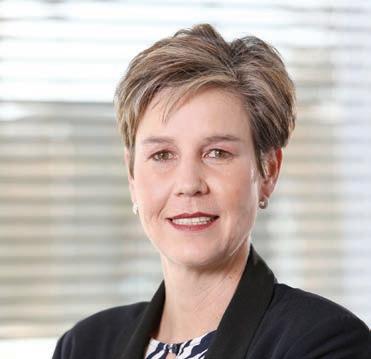
government adopting amendments to the Electricity Regulation Act, as this effectively paves the way for creating a framework for traders, aggregators and bilateral agreements between companies and electricity providers. Another crucial element is a transparent wheeling framework to support planning and costing of projects.”
The sale of electricity represents a source of revenue for a government seeking to increase its income. Van Tonder says this is why the wheeling model needs to be clear and transparent. “Rather than an independent power producer (IPP) selling power only to Eskom, an IPP will pay a wheeling charge to the transmission company and sell the power to a corporate offtaker.
“If you’re sitting in a short-supply situation, any new megawatts into the grid are welcomed, but this must happen in a transparent model that supports a balanced framework of risk and sustainability,” says van Tonder.
As the open market grows, power providers will have greater need of nancing solutions. For an IPP bidding into a programmatic or bilateral request for proposal to be competitive, three components are important considerations towards success, says van Tonder. “First is your cost of nance or nancing structure, project cost or EPC cost, and the hurdle rate from an equity return point of view.”
For this reason, nance is essential to support a competitive project in the sector.
“Large utility-scale projects are mainly funded through project nance structures, which effectively support nonrecourse structured debt solutions secured by project assets, supported by cash ows in terms of servicing the debt,” says van Tonder. “Such projects require long-term debt with the ability to structure through construction.”
Partnerships are also important, adds van Tonder. “These projects are sometimes more complex and take longer, so you look at blended nance solutions where commercial banks and development nance institutions act as joint debt providers. These funding structures and partnerships optimise the value proposition for the client.”







The exploitation of natural gas reserves in South Africa has been a source of contention, but whether local or imported, it could have a big part to play in our energy transition.
By ANTHONY SHARPE
Gas has been big news recently, both domestically and globally. Russia’s invasion of Ukraine sent gas prices soaring in Europe, sparking an energy crisis that is only now abating. Locally, in the latter part of last year, it emerged that Sasol would stop supplying natural gas from Mozambique when its contract ends in June 2026. Then the Department of Mineral Resources and Energy released its draft IRP 2023, which alarmed some experts with its dramatic increase in the allocation of natural gas in our energy mix.
So what role does gas have to play in securing our energy future?
Dele Kuti, Global Head, Energy and Infrastructure for Standard Bank, believes that, considering our energy supply crisis and the urgent need to reduce carbon emissions, gas is crucial for South Africa’s growth.
“For power generation, natural gas produces 50 per cent lower CO2 emissions than coal and 25 per cent less than diesel,” says Kuti. “Given that solar and wind are intermittent power sources, gas can play an important role as a transition fuel that provides a good baseload. Gas also has a diversified range of uses, including electricity, industry and transportation.”
A major challenge is that South African natural gas production is limited and the infrastructure to exploit discovered reserves is lacking, says Kuti.
For this reason, the bulk of our gas needs to be imported in the form of lique ed natural gas (LNG), which then needs to be processed at regasi cation plants before being distributed for use. “Building these won’t
Standard Bank’s Dele Kuti says Africa is sitting on over 600 trillion cubic feet of proven gas reserves, which have enormous implications for energy security, supply and local economies.
“Traditionally in Africa, you have gas produced in North Africa – mainly Egypt and Algeria, and in the Gulf of Guinea – Nigeria and Equatorial Guinea. However, over the last decade, several West African states have made moves towards gas production, including Cameroon, Angola, Congo and Ghana, which are already producing, and Senegal and Mauritania will likely start producing soon. Then there’s Mozambique and Tanzania and hopefully Namibia. There’s a massive opportunity to be able to drive this on the continent. After all, you can’t export renewables, but you can export gas, and it is not intermittent.”

to import gas from Namibia too, says Kuti, with options including connecting regasi cation plants to Floating LNG and a new pipeline required to bring in LNG within the next ve to seven years.
Exploiting South Africa’s reserves would reduce the reliance on imports. This has been the subject of considerable debate, with environmental groups contesting the likes of TotalEnergies and Shell’s exploration activities for fossil fuels in Bredasdrop and Orange basins, Karoo, Wild Coast and other locales.
“When we talk about a just energy transition, we look at balancing the trilemma of the cost of energy, security of supply and environmental impact,” says Kuti.
Regardless of where the gas is coming from, given its history around power facility maintenance and construction, one could hardly be blamed for being sceptical about government’s ability to produce the necessary infrastructure and secure the required offtake agreements timeously and on budget.
Kuti says the requests for proposal being considered are looking at a turnkey project arrangement, with private companies building the necessary infrastructure and government (or other players) buying gas from these entities.

happen overnight – it’ll take two or three years – and it will be quite expensive.”
Fortunately, says Kuti, there is the Republic of Mozambique Pipeline Investments Company pipeline, which brings gas from Mozambique and has the potential to continue doing so. “What is required is only more compression equipment to expand the existing capacity there.”
Large-scale gas discoveries in the Orange Basin, on the southern South Atlantic coast of Namibia and South Africa, offer great potential





more information: www.standardbank.com/cib
BY
Picasso Headline,
A proud division of Arena Holdings (Pty) Ltd, Hill on Empire, 16 Empire Road (cnr Hillside Road), Parktown, Johannesburg, 2193 PO Box 12500, Mill Street, Cape Town, 8010 www.businessmediamags.co.za
Editor: Anthony Sharpe
Content Manager: Raina Julies rainaj@picasso.co.za
Contributors: Eleni Giokos, Richardson Nyambose, Leandro Trindade
Copy Editor: Brenda Bryden
Content Co-ordinator: Natasha Maneveldt
Digital Editor: Stacey Visser vissers@businessmediamags.co.za
Head of Design: Jayne Macé-Ferguson
Senior Designer: Mfundo Archie Ndzo
Advert Designer: Bulelwa Sotashe
Cover Image: Blue Planet Studio/Istockphoto.com
Project Manager: Gavin Payne GavinP@picasso.co.za
+27 21 469 2477 | +27 74 031 9774
Sales: Arnold Cruywagen
Production Editor: Shamiela Brenner
Advertising Co-ordinator: Johan Labuschagne
Subscriptions and Distribution: Fatima Dramat, fatimad@picasso.co.za
Printer: CTP Printers, Cape Town
MANAGEMENT
Management Accountant: Deidre Musha
Business Manager: Lodewyk van der Walt
General Manager, Magazines: Jocelyne Bayer



Copyright: Picasso Headline. No portion of this magazine may be reproduced in any form without written consent of the publisher. The publisher is not responsible for unsolicited material. Energy is published by Picasso Headline. The opinions expressed are not necessarily those of Picasso Headline. All advertisements/advertorials have been paid for and therefore do not carry any endorsement by the publisher.
Whatever their perspective on climate change and its host of impending, appalling knock-on effects, the average South African might see electric cars as a little … out of reach, for now. They’re quite expensive. With fewer than 500 charging stations across the country (one for every 2 442 square kilometres) the necessary infrastructure is pretty thin on the ground. Then there’s the question of our electricity supply …
It’s thus understandable why the average South African might think electric vehicles (EVs) aren’t all that relevant to their lives right now. However, they’d be wrong.
Automotive production is our largest manufacturing sector, contributing nearly 5 per cent of gross domestic product, with vehicles and automotive components comprising 12.4 per cent of all exports. Our largest export market is the European
Union, which ostensibly plans to halt the sale of internal combustion engine vehicles there by 2035. If we don’t transition to manufacturing EVs and their necessary components – and soon – we stand to lose a lot of business, not to mention tens of thousands of jobs. It’s a complicated issue that we explore in this issue of Energy, which is dedicated largely to the future of mobility and its implications for our country.
That means we also look at some exciting new EVs dropping locally this year, along with what the booming lithium-ion battery market means for South Africa and its vast manganese reserves. Of course, fossil fuels will be around for a long time yet, so we close with an examination of the role of logistics in exploiting these resources with the most ef ciency.
Anthony Sharpe Editor

South Africa’s automotive industry is the pride of our manufacturing sector, but big changes are needed to keep up with an increasingly electric future.
15
A roundup of the most exciting new electric vehicles hitting local shores this year.

South Africa’s vast manganese reserves offer opportunities to capitalise on the growing battery market.
How the logistics sector is helping to drive the energy sector in Africa.
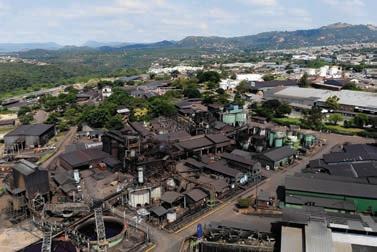


NMISA introduces the scientists ensuring South Africa’s green solutions measure up

Between load shedding issues and worries about climate change, “energy-ef cient” products and processes have never been more appealing. Whether it’s LED lights or “green” buildings and appliances, products that claim to use less energy are more sought-after than ever. But how do you know that these solutions do indeed save energy?
Ultimately, proving energy ef ciency comes down to one thing: measurement.
The National Metrology Institute of South Africa (NMISA), the country’s custodian of accurate measurement standards, is tackling this through its Energy Ef ciency Solutions (EES) programme. The EES programme aims
to ensure that the factor underpinning all claims to energy ef ciency – measurement – is accurate and credible.
“Our entry point into the question of energy ef ciency is interrogating how exactly energy is being measured, and if the instruments doing those measurements are accurate and giving readings that are traceable to national measurement standards, which, in turn, are aligned with international standards,” says Dr Linoh Magagula, the programme manager of NMISA’s EES.
“Here’s an example: say you have a generator for backup electricity and this generator vibrates or heats up a lot. Those vibrations or heat are actually wasting energy. You need a mechanism or equipment to measure that vibration or heat accurately and say whether it’s within an allowable limit. Only then can you tell whether that generator is truly energy ef cient, and if not, put measures in place to improve its ef ciency.”
Dr Magagula says the EES programme aims to bring measurement expertise to all stages of the energy value chain, from production to distribution to storage to the devices that use energy.
NMISA is one of four entities of the Department of Trade, Industry and Competition that form the country’s technical (quality) infrastructure system, which interrogates and accredits energy-ef cient solutions (among many other products and services) so that end users can have con dence these solutions are t for their intended purpose.
The other three entities are the South African Bureau of Standards, the South African National Accreditation System and the National Regulator for Compulsory Speci cations.
While these three entities deal with questions of regulation, standardisation and accreditation, NMISA’s metrology (measurement science) guidance serves as a foundation, ensuring the underlying measurements are accurate and internationally acceptable.
Electrical energy is a key focus area of the EES programme. Flippie Prinsloo, a metrologist at NMISA, oversees this core function.
“We are responsible for the national measurement standard for electrical energy. So everywhere electricity is measured in South Africa – from power generation plants to municipalities, or even between end users and municipalities – those measurements are done by energy meters.
“Calibration of these meters must be traceable to the National Measurement Standards we maintain, which are the most accurate in South Africa. Without this traceability, there is no way of telling if those measurements are accurate,” says Prinsloo.
As South Africa rushes to add power from different sources to the national grid, Prinsloo says NMISA is alert to factors that may affect efficiencies.
“AS WE TRANSITION TO SMART GRIDS OVER TIME, ACCURATE MEASUREMENTS WILL BE EVEN MORE CRITICAL TO FACILITATE RELIABLE CONTROL AND MONITORING OF KEY PARAMETERS. A SMART GRID IS ONLY AS SMART AS THE QUALITY OF ITS MEASUREMENTS.” – FLIPPIE PRINSLOO

“We have worked with a power utility and a team of academics to develop the capability to calibrate equipment that measures ‘harmonics’ on the grid.”
Harmonics are distortions that may occur when nonlinear loads are connected to the grid. These can cause energy to be lost.
Accurately measuring harmonics is a critical rst step to devising solutions.
“As we transition to smart grids over time, accurate measurements will be even more critical to facilitate reliable control and monitoring of key parameters. A smart grid is only as smart as the quality of its measurements.”
NMISA is also working with partners to establish a testing facility for lighting equipment such as LEDs.
“Everyone believes LEDs are energy ef cient, right?” asks Dr Magagula.
“But are all LEDs really as ef cient as claimed on their labels? We are making progress towards having an accredited measurement and testing facility for lighting equipment, including LEDs and other light source technologies, to verify if they hold up to speci cations and standards. This means, for example, when consumers invest in energyef cient lighting, that claim of energy ef ciency is accurately measured and traceable. Currently, our laboratory is set up for testing of several requirements for functional performance and energy ef ciency and photobiological safety of related lighting equipment.”
“OUR ENTRY POINT INTO THE QUESTION OF ENERGY EFFICIENCY IS INTERROGATING HOW EXACTLY ENERGY IS BEING MEASURED, AND IF THE INSTRUMENTS DOING THOSE MEASUREMENTS ARE ACCURATE.”
– DR LINOH MAGAGULA
Dr Magagula is excited about NMISA’s work so far in the EES space.
“There is a popular saying that you can’t improve something you can’t measure. That’s why metrology is at the heart of this quest for energy ef ciency. To improve our energy systems and make them more sustainable and better for people and the environment, we need to ensure we can accurately measure every aspect of the systems.
“We must make sure that measuring and testing equipment is traceable to national standards through calibration to allow for a meaningful improvement in energy-efficiency initiatives.
“In that way, we will be able to tell if a solution is an improvement that is really taking us closer to our goal of ensuring the energy we produce is being used as efficiently as possible,” Dr Magagula concludes.



For more information: + (27) 12 947 2800 info@nmisa.org www.nmisa.org
South Africa’s automotive industry is the pride of our manufacturing sector, but big changes need to be made if we’re to keep up with an increasingly electric future.
By ANTHONY SHARPE

In case you didn’t know it, South Africa’s automotive sector is big business. Big business, and of vital importance. Let’s look at some numbers. According to data from naamsa – The Automotive Business Council – it is the largest industrial sector in the country, contributing 4.9 per cent to gross domestic product (GDP) in 2022, when 555 889 vehicles were produced (up from 499 087 in 2021). Exports of vehicles and automotive components totalled a record R227.3-billion in 2022, making up 12.4 per cent of all South Africa’s exports.
However, there’s trouble on the horizon. In an effort to reduce carbon emissions, the developed world is shifting away from internal combustion engine (ICE) vehicles towards electric vehicles (EVs). Take the European Union and United Kingdom, for example, which plan to halt the sale of conventional ICE vehicles by 2035. These markets account for a staggering 58.6 per cent of South African
automotive exports. If we fail to shift to production focused on EVs, we stand to lose out signi cantly.
Automotive manufacturing in South Africa is governed by the Automotive Production Development Programme (APDP), which replaced the Motor Industry Development Programme in 2013, and the South African Automotive Masterplan.
To support the development of the EV market, the Department of Trade, Industry and Competition (DTIC) released the Electric Vehicles White Paper in November 2023. Andile Africa, CEO of the Automotive Industry Development Centre, says this represents a signi cant step forward for the industry.
“The paper lays out a detailed plan and a set of specialised policy interventions for the country’s automobile industry,” says Africa. “Notably, South African original
Besides its contribution to the economy, vehicle production provides jobs for 33 620 people (as of September 2023) in a country grappling with soaring unemployment.
Source: naamsa
equipment manufacturers (OEMs) have already embarked on the production of hybrid vehicles destined for the global export market. This demonstrates a tangible capability and readiness within the country’s automotive landscape to engage in EV manufacturing.”
However, Africa adds that despite this, there remains a notable gap in the domestic production of EV components. “Addressing this shortfall is important for South Africa to solidify its position within the rapidly evolving global EV market.”
At present, Toyota and Mercedes-Benz manufacture hybrids in South Africa, while BMW and Ford have announced major investment in upgrading their production facilities to accommodate such vehicles, says naamsa CEO Mikel Mabasa.
“The hybrid production by Toyota and Mercedes forms part of their current production lines, while the recent investment announcements by BMW and Ford of R4.2-billion and R5.2-billion respectively for plug-in hybrids will also be incorporated as part of their existing production lines.”
However, Mabasa says that manufacturing full EVs cannot necessarily be done using existing facilities and requires substantial capital. “An EV production line will require a large investment and a separate production line in view of the


con guration of the vehicle, which has major differences compared to an ICE vehicle. Typically, the investments for a green eld EV project would be 30 per cent higher compared with an ICE replacement or hybrid/ plug-in hybrid model investment.”
Africa says that beyond capital, there are several additional considerations and challenges companies must face in the shift to electric production.
“This requires careful planning and a strategic approach to address challenges related to infrastructure, workforce, supply chain, regulations, market dynamics and cost considerations. Companies willing to make the transition must assess these factors comprehensively to ensure a successful shift towards electric vehicle manufacturing.”
In the 2024 Budget Speech, Finance Minister Enoch Godongwana had some good news for the industry, announcing nancial support to help facilitate the move from ICE to EV production.
“More details from government’s side still need to be nalised, but the introduction of an investment allowance, set to commence in March 2026, for new EV investments to claim 150 per cent of qualifying investment spending in the rst year is a crucial step in attracting investments, fostering innovation and enhancing the growth of the sector within South Africa,” says Mabasa.
However, hybrids and plug-in hybrids fall outside the investment allowance, adds Mabasa. “Government support for these would go a long way to enhance adoption of these new energy vehicles in the country as well as demand-side stimulation for the sales of these vehicles.”
Moreover, Mabasa says the planned delay in implementing these incentives may hurt the industry. “The production incentive in the form of the 20 per cent Automotive Investment Scheme and the 150 per cent accelerated depreciated allowance will only be in place from March 2026, which means that in the interim South Africa will likely not see investments before that date.
“In addition, impediments to the EV industry really taking off include the lack of adequate demand-side support to stimulate the sales of EVs, which are on average 52 per cent more expensive than their ICE counterparts, along
with localisation of EV components such as batteries and other components to achieve 60 per cent local content as part of the Rules of Origin requirements to continue exporting vehicles duty-free to the European Union and the United Kingdom.”
It’s clear that demand-side support is essential. While there has been much focus on incentivising local EV production, less attention has been paid to supporting the development of a local market for these vehicles. “There are no incentives outlined within the policy framework for purchasing fully imported EVs,” says Africa. “Part of what OEMs have been pushing is that incentivising sales is crucial for in uencing the price point of EVs. Therefore, OEMs advocate for policies that encourage the purchase of EVs, which, in turn, would impact their affordability for consumers.”
This sentiment is echoed by Mabasa: “The production support by government is welcome, but given the already constrained domestic new vehicle market, demand-side support goes hand-in-hand with EV sales, as is implemented in most other countries in the world to kickstart sales of these vehicles, along with public infrastructure support because private companies would focus by and large on commercially viable locations and not necessarily on remote areas and highways.”
With by far the world’s richest reserves of manganese, along with other minerals used in the manufacture of lithium-ion batteries, South Africa stands to bene t hugely from the shift to EVs – particularly if we can move up the value chain.
“We need to look at a more aggressive strategy for mineral bene ciation, as most of the minerals used in EV batteries are from the Southern African Development Community,” says Africa. “Currently, most of our minerals are exported into China and Europe and come back as fully built vehicles.” He says, however, that the challenge with batteries is that they’re bulky components, meaning the logistics cost of exporting them to other markets will be high. “Nevertheless, there are opportunities in other components, such as battery cells,
“MANUFACTURING FULL EVS CANNOT NECESSARILY BE DONE USING EXISTING FACILITIES AND REQUIRES SUBSTANTIAL CAPITAL.” – MIKEL MABASA
South Africa’s Automotive Production Development Programme (APDP), which came into effect in 2013, comprises four pillars.
1. Import duty intended to protect local vehicle manufacturing.
2. Volume assembly allowance, which is a rebate mechanism that encourages production through lower tax rates for manufacturers.
3. Production incentive rebate mechanism intended to drive local value addition in the automotive value chain.
4. Automotive investment scheme cash grant for qualifying capital investment by original equipment manufacturers and component manufacturers. The APDP has been modified and joined by the South African Automotive Masterplan, which came into effect in 2021 to address the former’s flaws and thereby achieve the following goals:
• increasing South African vehicle production to 1 per cent of the global total;
• increasing local content in locally assembled vehicles from 38.7 per cent to 60 per cent;
• doubling employment across the automotive value chain;
• improving industry competitiveness;
• deepening value addition across automotive value chains; and
• achieving industry transformation.
conductors and battery motors, which we can process and export to our advantage.”
Mabasa says EV battery manufacturing is a key focus of the Electric Vehicles White Paper and there is huge potential for South Africa to collaborate with neighbouring countries around critical raw materials available in the region. “EV battery technologies continue to change and also differ from OEM to OEM, while the cell of the battery requires huge investments and volumes to be localised. However, there is de nite scope to bene ciate and add much more value to the raw materials to become a key player in the green value chain,” he concludes.



SELWYN WILLOUGHBY, Executive: integrated eco-system for the Atlantis Special Economic Zone, writes that education and training must pivot to ensure the required skills for the renewable energy sector
Renewable energy, particularly solar and wind power, has emerged as the most cost-effective means of electricity generation. Among others, this trend is fuelled by declining technology costs and government regulation enabling embedded energy. Data insights on renewable energy from Our World in Data show that 30 per cent of global electricity production came from renewable sources in 2023, while trade in renewable technologies continues to experience signi cant growth.
At the Cop28 Conference in the United Arab Emirates, over 130 countries committed to adopting the International Renewable Energy Agency’s 1.5°C scenario recommendations. The scenario requires tripling installed renewable energy power capacity to at least 11TW and doubling energy ef ciency by 2030. South Africa has immense potential to increase energy production from renewables. At present only 8.7 per cent of energy is generated from renewables, indicating an over-reliance on fossil fuels, as reported by
The Centre for Renewable and Sustainable Energy Studies. This share of renewable energy generation is steadily increasing through initiatives focused on diversifying the energy mix away from carbon-fuelled energy.
The estimated installed embedded solar PV reached 3.3GW by end-2023. This is set to increase to 36GW by 2030 with the solar market size forecast at R69-billion. The potential for wind energy is also set to increase. The current estimated installed capacity is expected to increase from 3357MW to 17742MW by 2030. We can see similar concomitant growth in the production of battery storage solutions.
The Atlantis Special Economic Zone (ASEZ) is designated a greentech SEZ and therefore a key enabler and supporter of the just transition. It aims to set the benchmark for green industrialisation. The concept of greentech is built from the principles of a green economy that is lowcarbon (zero carbon), resource efficient and socially inclusive.
We have an opportunity to transform our education and training in alignment with the fast-changing green technology frontier –doing this is key to a successful just energy transition. Integrating green technology skills into our training programmes is a critical step in ensuring sustainable social and economic bene ts. Missing this chance will deprive millions of people of an opportunity to obtain decent jobs.
We aim to implement the just transition and ensure we leave no one behind – this means being inclusive. This notion is demonstrated in the Just Energy Transition Framework, the Just Energy Transition Partnership, the Just Energy Transition Investment Plan and other related policy frameworks. However, we do not have a shared vision of how all these policy frameworks translate into coherent actionable skills and training efforts. Opening the opportunities to access this wave of greentech jobs will require unprecedented collaboration between civil society, labour, education and the public and private sectors.
The concept of green jobs does not mean a different set of skills across the economy because existing occupations must include a green economy focus going forward. Existing jobs will remain and be “greened”. Existing occupations, such as engineers, programmers, welders and electricians, can be upskilled to adapt to a green economy. We need to assess and dissect the value chains in the innovation, production, installation and maintenance of green technologies to understand what skills and capacities are required now and in the future. Further, we need to integrate the concept of low-carbon, resource-ef cient, climate resilience practices in all existing education and training programmes.
The demand and supply skills gap remains a major challenge. Understanding the skills demand, the trajectory of those demands and the ability to deliver can advance our low-carbon transition. Through our talent development process, we need to drive innovation in energy ef ciency and manufacturing and develop new evolving products and services. Closer collaboration is required between industry practice and institutions of learning to close this demand and supply gap and to drive innovation.

Aligning the education and training policy landscape is one facet, we also need to ensure our related economy and trade policy environment is attractive and conducive to potential investors. A trained workforce and responsive small business sector are components of a larger system that must attract and retain local and foreign investment. Opening these opportunities for education and training will require a comprehensive and holistic nancing approach to ensure sustained, successful participation. The cost of accessing education and training can be prohibitive and excludes the cost of participating in the training process on a day-to-day basis. We must ensure we have an all-inclusive sustained investment in education and training.
Acknowledging gender dynamics in the transition is vital. We have an opportunity to ensure greater participation of girls and women in science, technology, mathematics and engineering elds. The ASEZ with NBI recently concluded an Installation, Repair and Maintenance programme. Sixty per cent of participants were women. Our recently completed science, technology, engineering,

arts and mathematics (STEAM) initiative, involving all the high schools in Atlantis, with the Cape Peninsula University of Technology, had 61 per cent female participation.
While female participation is non-negotiable in the transition, we also need to ensure we develop an enabling environment for women, especially single mothers, to participate in the economy.
Another major challenge is the growth and development of our small business ecosystem. Our small businesses have limited access to information on how they can participate in the green economy transition. Education and training for our small businesses on the possible opportunities in this emerging sector can yield signi cant bene ts for local economic development.
Supporting small businesses requires us to:
• analyse the green technology value chain for the opportunities;
• develop education and training programmes to build the skills and talent to harness these business opportunities;
• engage all spheres of government to ease and harmonise the ability to conduct business; and
• promote awareness of the opportunities. It is also important to engage with corporates to understand the opportunities they can create and to assist with education, training and access to markets.
The major challenge is often how we translate policy ideals into practical on-the-ground reality.
South Africa is known for excelling at policy development but lags with implementation. Our communities must see the tangible bene ts that come with the transformation of education and training for the green economy transition. Without this, we will not attract interest and participation.
The opportunity to build and strengthen our talent pool for the green economy transition
requires a multifaceted approach. Focusing on education and training programmes without addressing systemic enabling funding, innovation, economy, trade and investment conditions will result in limited traction.
While we might be tempted to call for a big green economy skills education and training conference or summit, we must be mindful of the urgency; not only of the industry, but also to create sustainable jobs and ensure our families can send their children to school to build the next generation of green technology experts. We can and should have the gathering, but we need to demonstrate that we can implement and make a difference at the same time.




RICHARDSON NYAMBOSE puts the pedal to the metal with the most exciting new electric vehicles hitting local shores this year

BYD’s new electric hatch, Dolphin, will be sold in South Africa in Dynamic and Premium variants.
The former will be powered by a 44.9kWh Blade Battery pack that feeds power to an electric motor pumping out 70kW and 180Nm, enough to accelerate it from 0 to 100km/h in 12.3 seconds. The Dynamic variant gets a bigger 60.48kWh pack and a powerful electric motor with 150kW and 310Nm of torque, enough for a seven-second sprint to 100km/h.
Both models offer ranges of 340km and 427km respectively, with 30–80 per cent charge achievable in 29 minutes via a 100kW DC charger.
Indicative pricing positions the BYD Dolphin as the most affordable electric car in the market, undercutting its Chinese rival, the GWM Ora 03, by a signi cant margin.
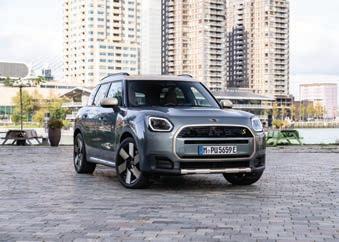
This year, Mini will introduce its rst-ever Countryman SE, which is quite a looker and more signi cant than the current-generation ICE-powered variant. Available in two variants, the E and SE ALL4 output 150kW/250Nm and 230kW/494Nm respectively. The E reaches 100km/h in 8.6 seconds with a top speed of 170km/h, while the SE ALL4 does so in 5.6 seconds, maxing out at 180km/h.
With a 54kWh battery pack, the E variant has a range of up to 462km, while the SE ALL4 is equipped with a bigger 66.45kWh pack, good for 433km. This will be a welcome addition to the local Mini range, considering its impressive EV range.

The powerful electric SUV from China offers two variants: the R and S. The R variant has 675kW power, 985Nm torque, a range of 490km and can reach 100km/h in 3.0 seconds.
The S variant has 450kW power, 710Nm torque, a range of 600km and can accelerate to 100km/h in 4.5 seconds. Both variants feature 350kW DC hyper-fast charging, adding about 400km in 20 minutes. These features make them the most powerful electric SUVs in South Africa.
Besides the Eletre being the brand’s first SUV, it’s Lotus’ first SUV and the first Lotus vehicle to be manufactured in China, signalling a new era of global expansion for the brand.
Source: MotorTrend
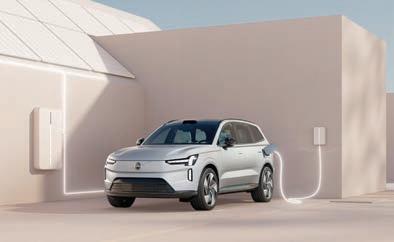
Volvo aims to be fully electric by 2030 with models such as the EX30 and EX90. The EX30, available in South Africa, has Single and Twin Motor versions with 51kWh and 69kWh batteries respectively.
The Twin Motor variant can reach 100km/h in 3.6 seconds due to its 315kW and 543Nm output. The EX90, an electric XC90 SUV, has a 111kWh battery and two motors with 380kW and 910Nm. It can travel 600km and charge from 10 to 80 per cent in under 30 seconds.
The EX90 and EX30 models both have leather-free interiors and use a variety of recycled and renewable materials as part of Volvo’s commitment to sustainability.
Source: Volvo Cars

Dubbed the electric version of the Grecale, the Folgore is set to become the first all-electric model in the marque’s history books. It comes fitted with a 105kWh battery pack that feeds power to two electric motors on each axle with a total power output of up to 559kW and a neck-twisting 1 000Nm of torque. It sprints silently from 0 to 100km/h in 4.1 seconds and will travel up to 500km before the battery pack gets depleted. According to Maserati, the battery pack can be recharged up to 80 per cent in 29 minutes.
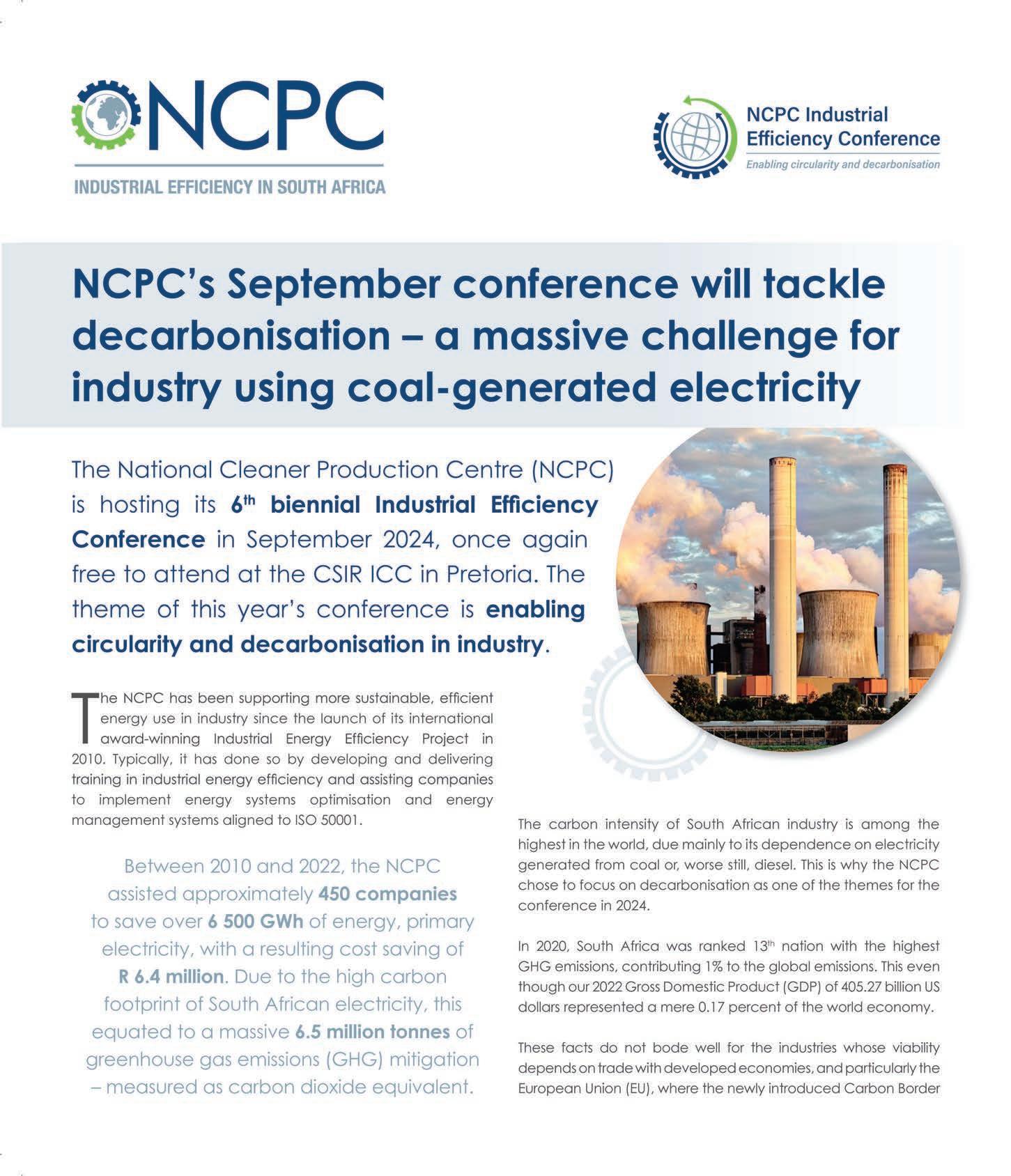

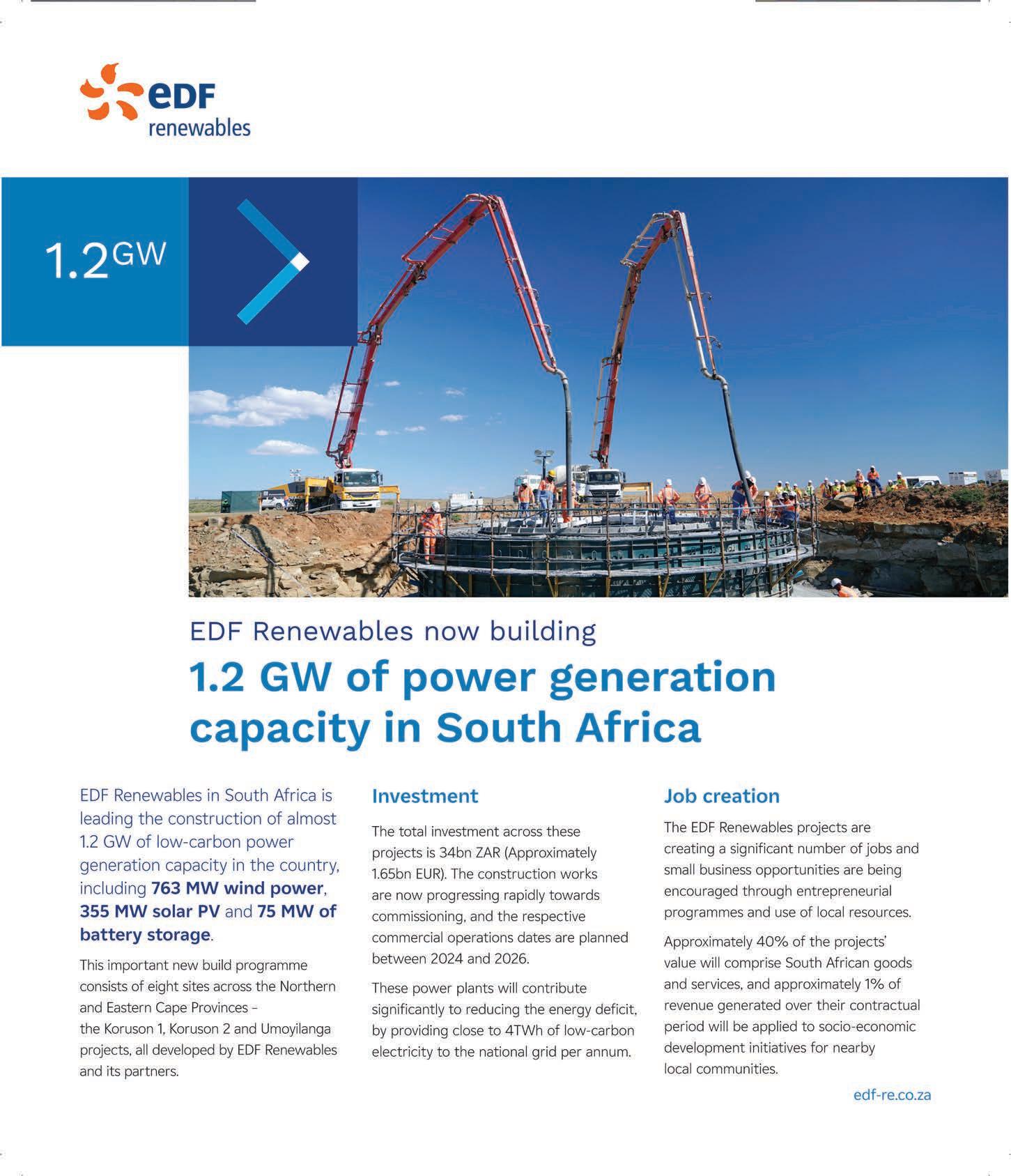
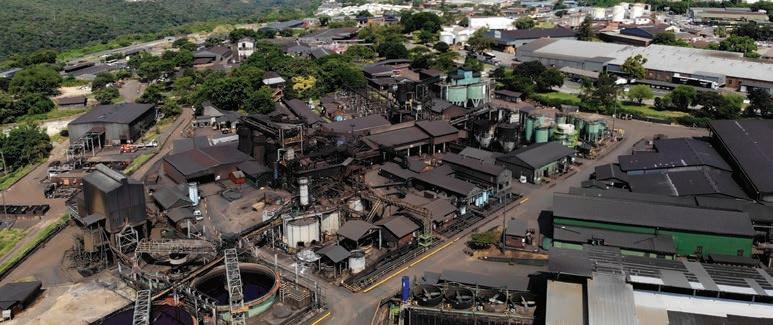
South Africa’s vast manganese reserves offer opportunities to capitalise on the growing battery market. By ELENI GIOKOS, anchor and correspondent at CNN
The historic exploitation of South Africa’s mineral resources by others is well documented, but the country’s apparent inability to harness this power for itself is a source of exasperation for many of its citizens. In common with many countries across Africa, so many of its most precious and potentially lucrative mineral assets are sent elsewhere to become key ingredients in far more pro table products – often imported back in their nished state.
One such mineral is manganese, which we explored in a recent CNN Connecting Africa series.
South Africa is blessed with the world’s largest reserves of manganese, a key ingredient in steel and many fertilisers. Recently, the mineral’s usefulness in batteries, crucial to the transition to electric vehicles (EVs) has caught the eye. However, currently, 98 per cent of South Africa’s manganese ore is sent abroad for processing – a number one local company is looking to change.
Mbombela, at the gateway to the world-famous Kruger National Park, is home to the Manganese Metal Company’s industrial complex. Daily, manganese ore mined from the Kalahari Basin in the Northern Cape rolls onto the site by the truckload for processing.
CEO Louis Nel is bullish about the company’s growth prospects, largely thanks
to demand from the battery industry and EVs. “If we go back to say 2012, 2014, I think about eight per cent of our product basket went into the battery industry. That has changed signi cantly, at the moment they are at twenty-six per cent of our product basket, and we see that growing year on year.
anticipate an increased demand in the future, they increase capacity immediately.” It is a quality with which Africa struggles to compete.
South Africa’s other problem, according to d’Harambure, is the dearth of local customers for EVs. “It’s better to build a manganese chemical facility near the customer because transporting manganese to another country is not extremely expensive – what is expensive is producing the chemical.” The Manganese Metal Company remains undaunted. It plans to invest around R450-million in constructing a plant that could produce 5 000 metric tonnes of battery-grade manganese sulphate.
“The engineering design is almost complete and technically all boxes checked,” Nel says. “We’re looking at a relatively short build time of about 18 months. If we get going soon, we could be operational by mid-2026.”

“With the growth in EV sales globally, raw materials and batteries are required. Manganese is a key component in those batteries. So of course, with the uptick in EVs, the raw materials are pulled along.”
Manganese plays a key role in creating stable batteries, says Aloys d’Harambure, executive director of the International Manganese Institute. “It ensures good battery safety and is much cheaper than many other products.”
But processing is complex and completely dominated by China, which processes 90 per cent of the chemicals needed to process manganese into the kind of high-purity manganese sulphate needed for EV batteries.
The Chinese have proven agility in meeting demand, notes d’Harambure. “As soon as they
Manganese is not just about EVs and steel. “It is also essential to producing several other green power technologies, including solar panels and wind turbines,” d’Harambure says. “It’s used to treat wastewater and extract pollutants from soil and air. So, the whole push towards greener energy directly bene ts the manganese industry. Manganese is 100 per cent recyclable and can be recycled endlessly.”
One resource South Africa has never had an issue with putting to use at home is coal. It has a deep dependence on it for energy production, with some 70 per cent of the country’s primary energy demands met by the polluting mineral. The prospect of transitioning away from a resource on which so many depend for work looms large.
In manganese, South Africa nds itself sitting on a valuable, abundant, versatile resource. If it can nd a way to unlock its potential, then perhaps it could become a key pillar in a much-needed industrial transformation.
“THE WHOLE PUSH TOWARDS GREENER ENERGY DIRECTLY BENEFITS THE MANGANESE INDUSTRY.” – ALOYS D’HARAMBURE
The logistics sector is helping drive the energy sector in Africa, writes LEANDRO TRINDADE , director of oil and gas business development at DSV Air and Sea
Successful collaboration between private and public sectors will help realise the huge potential of Africa’s oil and gas industry – and contribute signi cantly to the continent’s socioeconomic development. Estimates of the value of the global oil and gas market vary, but global market research rm Kings Research puts the 2022 value at R120.3-trillion in 2022 and says it is projected to reach R156.5-trillion by 2030, growing at a compound annual growth rate of 3.80 per cent from 2023 to 2030.
With substantial reserves of oil and natural gas, Africa is a focal point for international investment and exploration activities. More than 490 projects are anticipated to start in the period 2023–2027. Africa accounted for roughly eight per cent of global oil output in 2022, and natural gas reserves exceed 625 trillion cubic metres. Natural gas production has been steadily increasing.
Converting potential to productive use and bene t is challenging – this is where logistics and supply chains play a role, moving drilling rigs, building re neries and pipelines, spare parts, oversized cargo, heavy machinery and rig-down critical equipment from manufacturer to the remotest locations in the world.
DSV, which provides and manages supply chain solutions from more than 80 of ces around the world, is currently active in Angola (30 projects since 2011), Mozambique (more than 25 projects since 1998), South Africa (over 15 projects since 2009) and Namibia (more than 5 projects since 2010). There has been recent activity in Zimbabwe with an exploration discovery in 2023, which could lead to further investment appetite in the region.
It’s a deadline-driven industry that requires handling large-scale freight to remote regions, the consolidation of diverse transportation methods and moving of hazardous materials, all of which DSV provides from a footprint covering the world’s major industry hubs:

Houston, USA (the Gulf); Aberdeen, Scotland (North Sea), Rotterdam, Holland (Europe); Cape Town, South Africa (Africa), Dubai, UAE (Middle East) and Singapore (Asia).
DSV’s tailored oil and gas end-to-end visibility is particularly important and integrates DSV’s proprietary purchase order management system, eDC, with warehousing and transport data. The process effectively links each party in the supply chain, providing 24-hour visibility.
The exploration and production of oil and gas provide vital revenues – oil and gas accounted for nearly 6 per cent of Nigeria’s gross domestic product (GDP) in 2023 and 19 per cent of Algeria’s GDP in 2019 according to reports. It also creates employment opportunities,
contributes to infrastructure development and industrialisation and signi cantly impacts the continent’s development and position in global energy dynamics.
While the sector has historically been concentrated in countries such as Nigeria, Algeria, Angola, Egypt and Libya, it has grown steadily in other parts of the continent, too, as evidenced by DSV’s extensive involvement in Angola and Mozambique. More recently signi cant discoveries of oil reserves have been made in Uganda.
The oil and gas industry in Africa has an important part to play in attracting investment, catalysing infrastructure development and contributing to the continent’s economic development, and all role players recognise the need to balance economic growth with environmental sustainability.
A global drilling rig customer appointed DSV for a five-year period to handle all outbound transportation from various logistics hubs to the customer’s more than 20 global rig sites. The scope of work includes pickup and delivery to DSV’s hub, line item checking, packaging and consolidating cargo and air or ocean transport to destination countries or locations. Each order’s milestones along the supply chain journey are visible through DSV’s eDC purchase order management system.
Major International Drilling Contractor – Partnering with DSV to redefine excellence in their logistics

